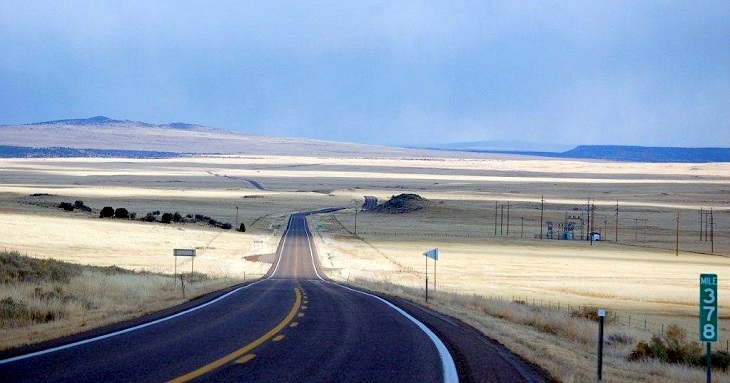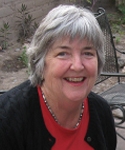The Arizona Rural Health Association is heading into 2016 with at least two major goals: reaching out to youth about the critical need in Arizona and across the nation for more health-care professionals, and expanding the association’s partnership with the Arizona Telemedicine Program to deliver that message and others to as wide a public audience as possible.
“Nationwide, about 10 percent of doctors practice in rural areas, while one-fourth of the population lives in rural communities,” said Robert Fleet, president of the Arizona Rural Health Association (AzRHA). “In Arizona, we face a critical shortage of physicians.”
Data from the National Rural Health Association show that rural populations are older, more likely to live in poverty, less likely to have access to dental care . . . the list goes on.
The AzRHA’s annual youth conference is a major effort to increase access to high quality health care in rural communities. AzRHA will hold two youth conferences in 2016, in the spring in Yuma, and in the fall in Flagstaff. Fleet hopes to get speakers who work in rural health, including doctors, nurses and other providers, to talk to high-school students at the conference.
“We want to make these students aware of the challenges and rewards of practicing in rural communities, to get them interested in health careers in these environments,” Fleet said.
Daniel Derksen, MD, director of the University of Arizona’s Center for Rural Health, concurs with Fleet, and notes that programs such as the statewide network of Area Health Education Centers, the University of Arizona College of Medicine – Tucson’s Rural Health Professions Program have a significant role in increasing high-school, university and post-baccalaureate students’ interest in health careers in rural communities.
The need will only increase, Derksen said, due to the greater number of Arizonans who are now receiving health-care coverage through Medicaid and the Marketplace established under the Affordable Care Act.
The Center for Rural Health received a Navigator grant this year to help eligible people enroll and renew health plans purchased in the Marketplace. As of March 2015, the participation rate of Arizonans eligible for a subsidized Marketplace plan was 38 percent of those eligible. “That means that there still about 300,000 uninsured Arizonans eligible for a subsidized Marketplace plan,” Derksen explained. The participation rate was lower for the state’s rural, Hispanic and Native American populations. On the other hand, the participation rate was much higher for Arizonans eligible for the state’s Medicaid program, called AHCCCS.
“Three out of four eligible for Medicaid coverage have enrolled through December of 2015,” Derksen said. “We should be able to get the participation rate to over 50% of those eligible for a subsidized Marketplace plan enrolled by the end of the open enrollment period on January 31, 2015. That would be welcome news for the state’s rural hospitals and providers, who have very narrow fiscal margins due to high rates of uncompensated care, and the lower reimbursement rates paid by Medicaid,” Derksen said.
“We’ve certainly seen a dramatic reduction in the number of uninsured in our state,” Derksen said. “As more are covered, we also have to make sure there are enough providers, especially in our rural areas.”
Derksen, who is a member of the AzRHA board of directors, considers the organization’s work vital to improving health care in Arizona.
“Carrying out some of these ideas legislatively, through the regulatory process or through implementation really begins with strong relationships. A lot of the folks serving with AzRHA have been with the organization for a number of years, beginning in the early days of the Rural Health Office,” a College of Medicine entity, now the Center for Rural Health in the UA’s Mel and Enid Zuckerman College of Public Health.
Those strong relationships can be made even stronger through the Arizona Telemedicine Program’s T-Health Institute in Phoenix, said Fleet, who served for six years as director of the Northern Arizona Regional Behavioral Health Authority. NARBHA became Health Choice Integrated Care in October, with Fleet continuing as director, following the Arizona Department of Health Services rule that RBHAs now offer primary health care in addition to behavioral health care for people with serious mental illness.
The T-Health Institute made it possible to update health professionals on the roll-out of the new integrated behavioral health care system, and Fleet hopes to do provide another update, via the T-Health Institute, in 2016.

“Especially here in northern Arizona, where our providers are so far apart, we really rely on telemedicine,” Fleet said. “To drive from Flagstaff to Phoenix and back makes for a long meeting. It would be hard to imagine rural health care without telemedicine these days.”
Another priority for the AzRHA is to increase membership, which is open to anyone who wants to join. Dues for regular members are $25 a year, and $10 a year for students.
“We need people who feel passionate about rural health and are willing to put in the time and the effort to make things happen,” Derksen said. “Robert Fleet is a shining example of that.”
